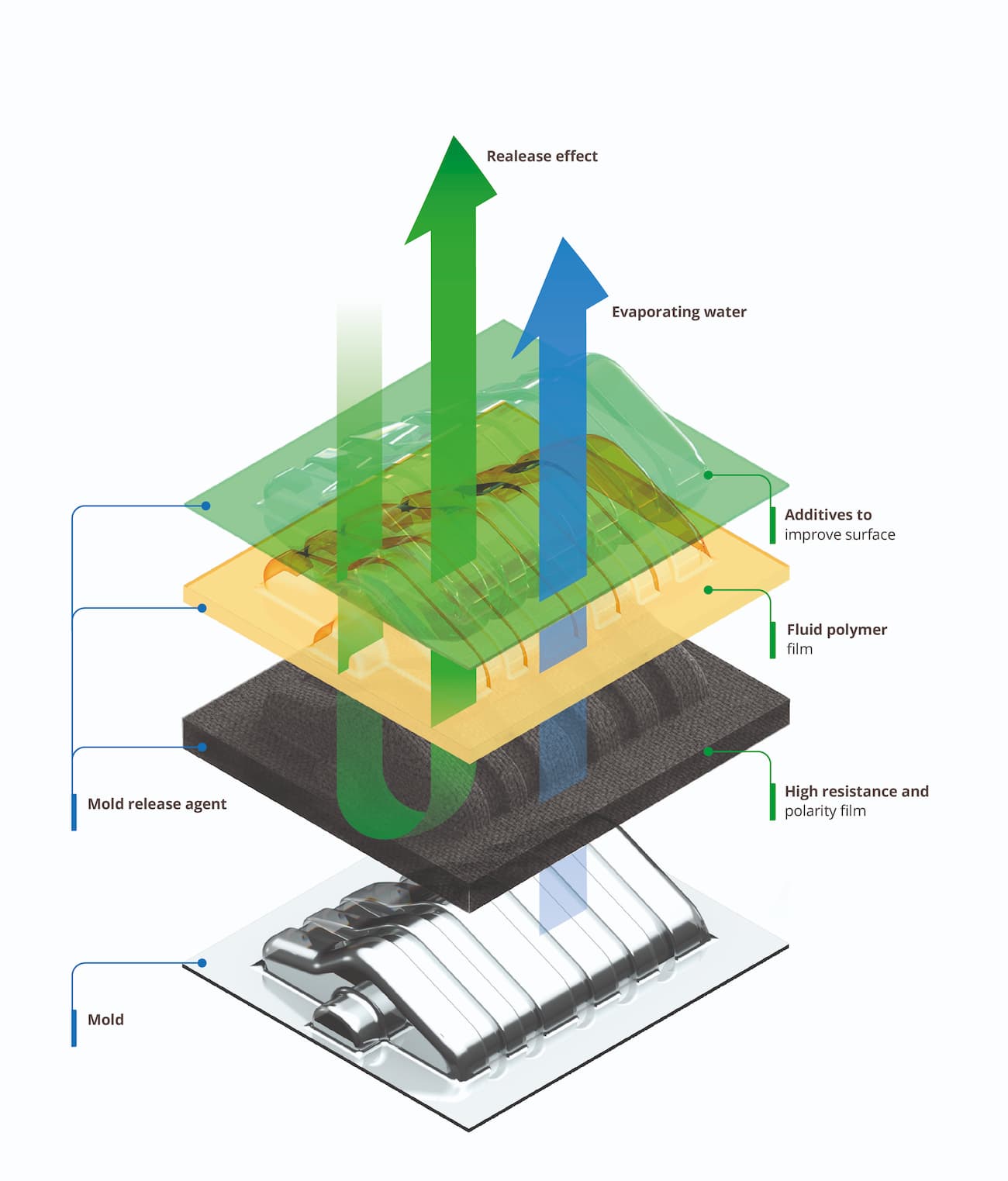The importance of mold curing.
>One of the most relevant processes in the PU foam production process is undoubtedly curing.
.Author: Alejandro Domínguez M. | adominguez@interlub.com | June 14, 2019
Mold curing refers to the method of initial application of release agent on the mold or surface, its objective is to form a very stable and robust film to ensure that the mold is ready to operate for the first and subsequent parts without any defect.
On the other hand, the curing term is also widely used to explain the hardening or maturing of polymers after their formation; and it is used in segments in which parts are made of polyurethane, rubber, thermoplastic polymers, elastomers and others.
Here we will only talk about the curing process of mould release agent on mould, a well-known example is the one carried out in baking, where it is necessary to cover/cure the mould with butter or oil so that the cake or biscuits do not adhere to the baking process and thus easily remove them from the mould or tray without breaking.
In the industrial world it is almost exactly the same, however, there are production plants that measure their production in more than half a million pieces of foams per month, so the starting process becomes extremely critical.
How does a demoulding agent work?
As the image shows, a demoulding agent is composed of several elements that when they interact on the surface will have a specific task to fulfill.
Film Formation.
As an illustrative example we will divide the release film into 3 layers to explain in detail how it works.

1. Water vehicle: Water only functions as a carrier of solids, and on contact with the surface it will evaporate completely leaving only the solids.
2. Resistant film: is the one that will form a barrier between the mould and the piece, it is usually the thickest and in case it is not well formed or is badly selected it can cause the piece to stick or tear.
.3. Medium film: works as a lubricating layer to facilitate release, this barrier usually migrates to the surface of the part leaving traces of its composition.
4. Additives: are those that determine the texture and porosity of the piece, the amount within the formulas is usually very small so its residue and migration is little measurable while its impact is considerable.
Other Considerations.
>With most release agents it is necessary to cure at working temperatures, since some of the compounds have changes in their chemical and physical structure when reaching certain temperatures, sometimes of high complexity it is advisable to run with the closing and opening of the mold as if it were a normal foaming cycle.
Curing of new moulds. It is recommended to make at least 3 to 5 applications in individual processes so that each layer can dry independently.
In some cases it is necessary to repeat and repeat the process until the film is visible.
Curing for moulds after the cleaning process, usually simpler than curing to a new mould and with 3 applications or layers should be more than sufficient, the first part may have a higher accumulation, but part by part will be reduced to its optimum level.
.